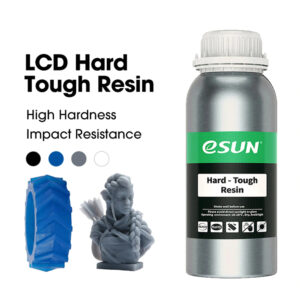Delivery Method: Via Email Reference #: 320-25-88 Product: Drugs Recipient:
Recipient Name
Phanesh Koneru, PhD, LL.M.
Recipient Title
President and CEO
Exela Pharma Sciences, LLC
1245 Blowing Rock Blvd
Lenoir, NC 28645-3618
United States
Issuing Office: Center for Drug Evaluation and Research (CDER)
United States
Warning Letter 320-25-88
July 2, 2025
Dear Dr. Koneru:
The United States Food and Drug Administration (FDA) inspected your drug manufacturing facility, Exela Pharma Sciences, FEI 3008563008, at 1245 Blowing Rock Blvd, Lenoir, NC 28645, from November 4, 2024, to November 15, 2024.
This warning letter summarizes significant violations of Current Good Manufacturing Practice (CGMP) regulations for finished pharmaceuticals based on observations made at that time and our subsequent analysis. See Title 21 Code of Federal Regulations (CFR), parts 210 and 211 (21 CFR parts 210 and 211).
Because your methods, facilities, or controls for manufacturing, processing, packing, or holding do not conform to CGMP, your drug products are adulterated within the meaning of section 501(a)(2)(B) of the Federal Food, Drug, and Cosmetic Act (FD&C Act), 21 U.S.C. 351(a)(2)(B).
We reviewed your December 9, 2024 response to our Form FDA 483 in detail and acknowledge receipt of your subsequent correspondence.
I. Drug Manufacturing Operations
Your facility is registered under section 510 of the FD&C ACT and manufactures multiple drug products pursuant to New Drug Applications (NDA) and Abbreviated New Drug Applications (ANDA).
This section summarizes significant violations of CGMP regulations for finished pharmaceuticals you manufacture. See 21 CFR parts 210 and 211.
FDA investigators documented CGMP violations at your facility, that caused your drug products to be adulterated within the meaning of section 501(a)(2)(B) of the FD&C Act. The violations include, for example:
1. Your firm failed to thoroughly investigate any unexplained discrepancy or failure of a batch or any of its components to meet any of its specifications, whether or not the batch has already been distributed (21 CFR 211.192).
a. You invalidated, without an adequate root cause investigation, failing growth promotion results, which are used to determine suitability of media used for sterility testing of finished drug products. (b)(4), lot (b)(4), was used in the release sterility testing of multiple application drug products, including, but not limited to, ephedrine sulfate injection 5 mg/mL, potassium acetate injection 2 mEq/mL, folic acid injection 5 mg/mL, tranexamic acid injection 10 mg/mL, cupric chloride injection 1 mg/mL, glycopyrrolate injection 0.2 mg/mL, sodium bicarbonate injection 1 mEq/mL, nicardipine HCl 2.5 mg/mL, fentanyl citrate injection 50 mcg/mL, sodium nitroprusside injection 0.2 mg/mL, streptomycin injection, ibuprofen lysine injection 10 mg/mL, caffeine citrate injection 20 mg/mL, palonosetron HCl 0.125 mg/mL, pentamidine isethionate for inhalation, zinc chloride injection, and argatroban injection 100 mg/mL, despite growth promotion testing failing twice and passing on a third test. Your investigation concluded there was no product impact because retesting of the media ultimately achieved passing results. Your investigation documented human performance as the cause of the failing testing events for (b)(4), lot (b)(4), and (b)(4) other media lots; however, no specific human error was identified.
Your initial response acknowledged the investigation did not adequately document the evidence supporting the identified root cause despite the availability of test data. You also committed to revise SOP-000147 to require investigations for any confirmed or unconfirmed growth promotion failure and you plan to hire a third-party consultant to perform a retrospective review of investigations and train personnel.
Your initial response was inadequate. Your initial response did not include a copy of your revised procedure for “Quality Control Testing of Microbiological Test Media”, SOP-000147, to support your commitments to require investigations for all test failures and associated training for all analysts. Additionally, your investigation does not include a review of all failing growth promotion media for all application drug product batches tested using these media lots. Your initial response also did not provide protocols for your proposed retrospective assessments.
b. You invalidated, without an adequate root cause investigation, out-of-specification (OOS) results for sub-visible particulate matter testing of (b)(4) batches of sodium bicarbonate injection when one of (b)(4) vials failed. Your investigation documented that (b)(4) were observed in the sample (b)(4) for the failing vial, and the analyst was instructed to (b)(4) the line to clear the (b)(4). When a retest of the vial did not confirm the original results, you prepared new vials which gave passing results. Although you identified the root cause as related to human error, no corrective action or training was implemented to prevent recurrence.
Your initial response stated the root cause was due to (b)(4) in the sample (b)(4) and acknowledged that the analyst failed to follow the procedure. You stated you will revise your testing procedure “to include (b)(4) requirement for product that contains (b)(4)” … “to address any future human errors related to the dissipation of (b)(4) for particulate matter analysis.”
Your initial response was inadequate. Although your response indicates there were two quality events (QE) in a 10-day span due to OOS (high) particulate matter counts, your investigation determined there was no “formal” trend and no corrective action was needed. The second QE-000622 included “(b)(4)” of the analyst to understand the importance of allowing time for (b)(4). However, your initial response did not include a copy of your revised procedure, QCMET-000074, “Determination of Particulate Matter in Finished Drug Products,” and documentation to show all analysts who perform this test method have been retrained to prevent recurrence.
In response to this letter, provide:
- A retrospective, independent review of all invalidated OOS (including in-process and release/stability testing) results for US products currently in the U.S. market and within expiry as of the date of this letter and a report summarizing the findings of the analysis, including the following for each OOS:
o Determine whether the scientific justification and evidence relating to the invalidated OOS result conclusively or inconclusively demonstrates causative laboratory error.
o For investigations that conclusively establish laboratory root cause, provide rationale and ensure that all other laboratory methods vulnerable to the same or similar root cause are identified for remediation.
o For all OOS results found by the retrospective review to have an inconclusive or no root cause identified in the laboratory, include a thorough review of production (e.g., batch manufacturing records, adequacy of the manufacturing steps, suitability of equipment/facilities, variability of raw materials, process capability, deviation history, complaint history, batch failure history). Provide a summary of potential manufacturing root causes for each investigation, and any manufacturing operation improvements. - A comprehensive review and remediation plan for your OOS result investigation systems. The CAPA should include but not be limited to addressing the following:
o Quality unit oversight of laboratory investigations
o Identification of adverse laboratory control trends
o Resolution of causes of laboratory variation
o Initiation of thorough investigations of potential manufacturing causes whenever a laboratory cause cannot be conclusively identified
o Adequately scoping of each investigation and its CAPA
o Revised OOS investigation procedures with these and other remediations
2. Your firm failed to ensure that laboratory records included complete data derived from all tests necessary to ensure compliance with established specifications and standards (21 CFR 211.194(a)).
You failed to accurately document microbiology testing results. In addition, test results are not verified by a second person for accuracy. Specifically, on November 6, 2024, your analyst recorded fewer colony forming units for active air environmental monitoring samples than what was observed by our investigator during the examination. An independent review of the plate count by a second analyst to assure accuracy of the data was not conducted.
Reliability of data is fundamentally compromised when there is a failure to record or maintain complete and accurate records of test results. Furthermore, the lack of reliable data compromises the quality unit’s ability to exercise its function of ensuring compliance to applicable standards.
Your initial response acknowledged “a secondary, contemporaneous verification of environmental monitoring samples is fundamental to maintaining the integrity of such data.” You also committed to revise your procedures to require a second person review for all tests and to perform a retrospective review of “microbiology laboratory activities to identify activities that are not currently recorded electronically or contemporaneously.”
Your initial response was inadequate because it failed to address the misread plate counts observed during the inspection for viable air and identify corrective and preventative actions for this failure. Moreover, your response lacks an assessment of potential data integrity concerns associated with one-person verification.
In response to this letter, provide:
- A comprehensive assessment of your laboratory practices, procedures, methods, equipment, documentation, and analyst competencies. Based on this review, provide a detailed plan to remediate and evaluate the effectiveness of your laboratory system.
II. Outsourcing Facility Operations
You also registered your facility with FDA as an outsourcing facility under section 503B of the FD&C Act [21 U.S.C. § 353b]1 on June 6, 2014, initially, and most recently on January 1, 2024. Your facility deregistered as an outsourcing facility on December 20, 2024. We acknowledge your stated intent to discontinue production and distribution of 503B products effective January 31, 2025. As described below, the violations described in this letter are based on the observations in the most recent inspection and subsequent analysis, and they would continue to apply should you resume producing drug products intended to meet the conditions of section 503B.
During the inspection, the investigators noted serious deficiencies in your practices for producing drug products intended or expected to be sterile, which put patients at risk.
A. Compounded Drug Products under the FD&C Act
Under section 503B(b) of the FD&C Act, a compounder can register as an outsourcing facility with FDA. Drug products compounded by or under the direct supervision of a licensed pharmacist in an outsourcing facility qualify for exemptions from the drug approval requirements in section 505 of the FD&C Act [21 U.S.C. § 355(a)], the requirement in section 502(f)(1) of the FD&C Act [21 U.S.C. § 352(f)(1)] that labeling bear adequate directions for use and the Drug Supply Chain Security Act requirements in section 582 of the FD&C Act [21 U.S.C. § 360eee-1] if the conditions in section 503B of the FD&C Act are met.2
An outsourcing facility, which is defined in section 503B(d)(4) of the FD&C Act [21 U.S.C. § 353b(d)(4)], is a facility at one geographic location or address that — (i) is engaged in the compounding of sterile drugs; (ii) has elected to register as an outsourcing facility; and (iii) complies with all of the requirements of this section. Outsourcing facilities must comply with other applicable provisions of the FD&C Act, including section 501(a)(2)(B) [21 U.S.C. § 351(a)(2)(B)], regarding current good manufacturing practice (CGMP), and section 501(a)(2)(A) [21 U.S.C. § 351(a)(2)(A)], regarding insanitary conditions. Generally, CGMP requirements for the preparation of drug products are established in Title 21 of the Code of Federal Regulations (CFR) parts 210 and 211.
B. Violations of the FD&C Act
Adulterated Drug Products
The FDA investigators noted CGMP violations at your outsourcing facility, that caused your drug products to be adulterated within the meaning of section 501(a)(2)(B) of the FD&C Act. The violations include, for example:
1. Your firm failed to establish written procedures for production and process control designed to assure that the drug products you manufacture have the identity, strength, quality, and purity they purport or are represented to possess (21 CFR 211.100(a)).
2. Your firm failed to conduct laboratory testing to determine whether each batch of drug product purporting to be sterile conforms to such requirements (21 CFR 211.167(a)).
3. Your firm failed to thoroughly investigate any unexplained discrepancy or failure of a batch or any of its components to meet any of its specifications, whether or not the batch has already been distributed (21 CFR 211.192).
4. Laboratory records are deficient in that they do not include the initials and signature of the second person reviewing the record for accuracy (21 CFR 211.194(a)(8)).
5. Your firm failed to establish and follow an adequate written testing program designed to assess the stability characteristics of drug products and to use results of stability testing to determine appropriate storage conditions and expiration dates (21 CFR 211.166(a)).
6. Your firm failed to ensure that each person engaged in the manufacture, processing, packing, or holding of a drug product has the education, training, and experience, or any combination thereof, to enable that person to perform his or her assigned functions (21 CFR 211.25(a)).
7. Your firm failed to establish acceptance criteria for the sampling and testing conducted by the quality control unit that are adequate to assure that batches of drug products meet each appropriate specification and appropriate statistical quality control criteria as a condition for their approval and release (21 CFR 211.165(d)).
Outsourcing facilities must comply with CGMP requirements under section 501(a)(2)(B) of the FD&C Act. FDA’s regulations regarding CGMP requirements for the preparation of drug products have been established in 21 CFR parts 210 and 211. FDA intends to promulgate more specific CGMP regulations for outsourcing facilities. FDA has issued a revised draft guidance, Current Good Manufacturing Practice — Guidance for Human Drug Compounding Outsourcing Facilities under Section 503B of the FD&C Act. This draft guidance, when finalized, will describe FDA’s current thinking regarding outsourcing facilities and the CGMP requirements in 21 CFR parts 210 and 211 until more specific CGMP regulations for outsourcing facilities are promulgated.
Under section 301(a) of the FD&C Act [21 U.S.C. § 331(a)], the introduction or delivery for introduction into interstate commerce of any drug that is adulterated is a prohibited act. Further, it is a prohibited act under section 301(k) of the FD&C Act [21 U.S.C. § 331(k)] to do any act with respect to a drug, if such act is done while the drug is held for sale after shipment in interstate commerce and results in the drug being adulterated.
C. Corrective Actions
We have reviewed your facility’s responses to the Form FDA 483. We acknowledge that your facility deregistered as an outsourcing facility on December 20, 2024.
Some of your corrective actions appear adequate; however, we are unable to fully evaluate some of your corrective actions due to lack of adequate supporting documentation:
Regarding your firm’s process validation for (b)(4) cycles used to (b)(4) sterilize Sodium Chloride Injection 0.9% USP in 500mL IV bags being performed using (b)(4) and not the drug product, you state that notwithstanding your discussion regarding this observation, “Exela understands the Agency’s position in raising this issue. If the 503B program continues, pending further discussions with the Agency, Exela intends to validate the (b)(4) cycles for 0.9% Sodium Chloride Injection, 1000 mL IV bags using the actual product. This will be supplemented by sterility testing at release.” We acknowledge this commitment to performing the validations and sterility testing. If you decide to produce drugs intended or expected to be sterile in accordance with 503B, you would be subject to CGMPs, including conducting process validations for all drug products prior to their production and distribution.
Additionally, some of your corrective actions appear deficient:
1. Your firm used (b)(4) media lot (b)(4) to release sterility testing of Sodium Acetate Injection (in vials). However, two tests of lot (b)(4) were invalidated and the third test was passed without scientific rationale. Your firm’s investigation, QE-000487, states human performance was determined to be the root cause of the failed testing events. However, your firm did not document any specific human error identified when testing the (b)(4) media. Three other lots of test media ((b)(4) lot (b)(4), (b)(4) lot (b)(4), and (b)(4) lot (b)(4)) were documented in your firm’s investigation, QE-000487, as failing initial GPT and passing retest, however, no root cause for these test failures were documented.
In your responses, you state there was no impact to finished drug product since the observation resulted from human error rather than the media itself, however, you did not provide in your response evidence as to how you determined human error was the sole reason for the failed tests. In addition, your responses did not identify the source of the human error, or identify any improper techniques utilized by analyst(s) during the testing.
2. You failed to perform contemporaneous two-person checks during the reading of environmental (b)(4) plates and subsequent data entry of the results in your (b)(4) software system. A single analyst reads environmental plate counts, takes pictures only of the positive counts, and then enters results in the (b)(4) software system. The Quality Control (QC) personnel later review and verify the results in the (b)(4) software system. There is no assurance the analyst read plate counts accurately or entered data in the software system accurately. On November 6, 2024, an FDA investigator observed miscounted plates with discrepancies when compared to the analyst’s count which were later corrected by the analyst.
In your responses, you state that section 6.8.7.5 of your SOP-000189 “Use, Preparation, and Storage of QC – Microbiology Laboratory Media” has been revised. However, the revision does not clearly define when or how the second verifier will “…visually verify the presence or absence of microbiological growth….” Nor does the SOP address required timeframes as to when the second person will verify growth and ensure data is entered timely and correctly in the (b)(4) system. As written, the SOP fails to ensure contemporaneous QC review of plate counts and data accuracy.
3. Regarding your failing to have stability data to support a six-month expiration date for Sodium Chloride 0.9%, USP packaged in 500 mL polypropylene IV bags from a batch size of (b)(4) produced on the “(b)(4)” line in the (b)(4) building, your firm was not adhering to your SOP-QA-000064, “Stability Policy and Guidelines for Establishing Expiration Date or Beyond Use Date of 503B Product.” Section 6.1.5, of the SOP, states stability protocols will be established, and studies will be conducted for variations of 503B products. Your response states you have discontinued the 503B program and are no longer 503B registered. If you decide to produce drugs in accordance with 503B, the establishment of stability protocols are expected to be completed and studies to be in process before producing and distributing finished drug product.
We note that you refer to the “Temporary Policies for Compounding Certain Parenteral Drug Products Guidance for Industry, October 2024” in your response. It appears that your FDA 483 response may incorrectly describe some of the conditions discussed in this guidance. Should you resume production, in accordance with 503B, with the intent to qualify for the temporary policies described in this guidance, you should review it, particularly the conditions including using a default BUD of not more than 28 days at room temperature and not more than 42 days refrigerated when a sterility test has not been completed before release; the initiation of limited stability testing once the aggregate batch size of the product is expected to exceed 5,000 units; and initiation of CCIT with the first batch.
4. Regarding your firm’s visual inspection program, you committed to developing improvements to your existing visual inspection program, however, no information was provided of what you will do in the meantime before all the corrections have been made, evaluated, and revised, if needed, along with training. In addition, we have the following concerns with your planned corrections:
- You state that your defect rates will be based on (b)(4) Visual Inspection of Medicinal Products for Parenteral Use standards. You did not provide any details explaining your rationale for using the (b)(4) or (b)(4) standards.
- Deficiencies on the risk assessment of your visual inspection program and process.
i. Your risk assessment explains (b)(4) defects ((b)(4)) were not physically represented in the library of defects and concluded that they did not impact the integrity of the unit and, therefore, would have no impact on the patient. However, no information was provided as to why these (b)(4) defects would not impact the integrity of the unit or why the damaged (b)(4) was classified as a major defect rather than critical.
ii. Your risk assessment stated, “From the risk ratings and review of other data, although the test sets did not include an example of each defect type identified in SOP-000266, this assessment provides confidence that the robust training program provided adequate training on the identification of defects through the training hours in conjunction with the visual aid of defects….” This assessment appears flawed as it is based on test sets not including an example of each defect type and based on (b)(4) data rather than data collected during the visual inspection phase.
iii. It is not apparent if your risk assessment considered whether particulates could be inherent, intrinsic, or extrinsic in nature. It is not clear whether you have established defect (b)(4) with known inherent, intrinsic, or extrinsic defects for particulates. Therefore, it is not known whether visual inspectors can identify those defects during visual inspection. Furthermore, you are classifying all particulates as major defects, and your rationale for this classification is not provided.
- Your training or requalification time of (b)(4) periods does not reflect actual visual inspection conditions as documented in your batch record visual inspection worksheets.
In addition to the issues discussed above, you should note that CGMP requires the implementation of quality oversight and controls over the manufacture of drugs, including the safety of raw materials, materials used in drug manufacturing, and finished drug products. See section 501 of the FD&C Act. If you choose to contract with a laboratory to perform some functions required by CGMP, it is essential that you select a qualified contractor and that you maintain sufficient oversight of the contractor’s operations to ensure that it is fully CGMP compliant. Regardless of whether you rely on a contract facility, you are responsible for assuring that drugs you produce are neither adulterated nor misbranded. [See 21 CFR 210.1(b), 21 CFR 200.10(b)]
FDA strongly recommends that if you decide to resume compounding and distribution of sterile drugs your management first undertake a comprehensive assessment of operations, including facility design, procedures, personnel, processes, maintenance, materials, and systems. In particular, this review should assess your aseptic processing operations. A third-party consultant with relevant sterile drug manufacturing expertise should assist you in conducting this comprehensive evaluation.
III. Conclusion
The violations cited in this letter are not intended to be an all-inclusive list of violations that exist at your facility. You are responsible for investigating and determining the causes of any violations and for preventing their recurrence or the occurrence of other violations.
If you are considering an action that is likely to lead to a disruption in the supply of drugs produced at your facility, FDA requests that you contact CDER’s Drug Shortages Staff immediately, at drugshortages@fda.hhs.gov, so that FDA can work with you on the most effective way to bring your operations into compliance with the law. Contacting the Drug Shortages Staff also allows you to meet any obligations you may have to report discontinuances or interruptions in your drug manufacture under 21 U.S.C. 356C(b). This also allows FDA to consider, as soon as possible, what actions, if any, may be needed to avoid shortages and protect the health of patients who depend on your products.
Correct any violations promptly. Failure to promptly and adequately address this matter may result in regulatory or legal action without further notice including, without limitation, seizure and injunction. Unresolved violations may also prevent other Federal agencies from awarding contracts.
Failure to address violations may also cause FDA to withhold issuance of Export Certificates. FDA may withhold approval of new applications or supplements listing your firm as a drug manufacturer until any violations are completely addressed and we confirm your compliance with CGMP. We may re-inspect to verify that you have completed corrective actions to address any violations.
This letter notifies you of our findings and provides you an opportunity to address the above deficiencies. After you receive this letter, respond to this office in writing within 15 working days. Specify what you have done to address any violations and to prevent their recurrence. In response to this letter, you may provide additional information for our consideration as we continue to assess your activities and practices. If you cannot complete corrective actions within 15 working days, state your reasons for delay and your schedule for completion.
If you decide to resume operations under section 503B of the FD&C Act, you should take prompt action to address any violations. Failure to adequately address any violations may result in legal action without further notice, including, without limitation, seizure and injunction. Unresolved violations may also prevent other Federal agencies from awarding contracts.
As part of your response, please verify in writing your continuing intention to not resume operations under section 503B of the FD&C Act. If you intend to resume such operations in the future, please include an explanation of each step being taken to prevent the recurrence of any violations, as well as copies of related documentation. In addition to taking appropriate corrective actions, you should also notify us fifteen (15) working days prior to resuming production of drugs under section 503B of the FD&C Act in the future by contacting compoundinginspections@fda.hhs.gov.
Send your electronic reply to CDER-OC-OMQ-Communications@fda.hhs.gov. Identify your response with FEI 3008563008 and ATTN: Erika V. Butler.
We also recommend that, after you submit your response, you submit a Post-Warning Letter Meeting3 request to: FDA-GDUFAIII-PostWarningLetterandReinspectionRequests@fda.hhs.gov.
Sincerely,
/S/
Francis Godwin
Director
Office of Manufacturing Quality
Office of Compliance
Center for Drug Evaluation and Research
F. Gail Bormel, JD, RPh
Director
Office of Compounding Quality and Compliance
Office of Compliance
Center for Drug Evaluation and Research
_____________________
1 See Pub. L. No. 113-54, § 102(a), 127 Stat. 587, 587-588 (2013).
2 We remind you that there are conditions, other than those discussed in this letter, that must be satisfied to qualify for the exemptions in section 503B of the FDCA.
3 Under program enhancements for the Generic Drug User Fee Amendments (GDUFA) reauthorization for fiscal years (FYs) 2023-2027, also known as the GDUFA III Commitment Letter, your facility may be eligible for a Post-Warning Letter Meeting to obtain preliminary feedback from FDA on the adequacy and completeness of your corrective action plans. Please see the Guidance for Industry “Post-Warning Letter Meetings Under GDUFA” for more information: https://www.fda.gov/media/171785/download






